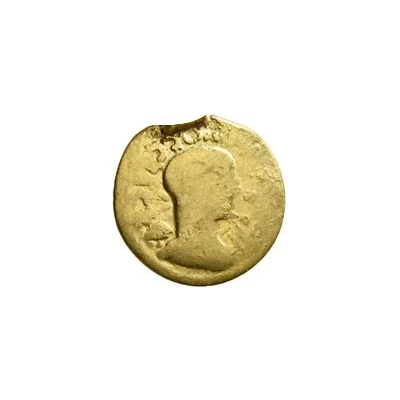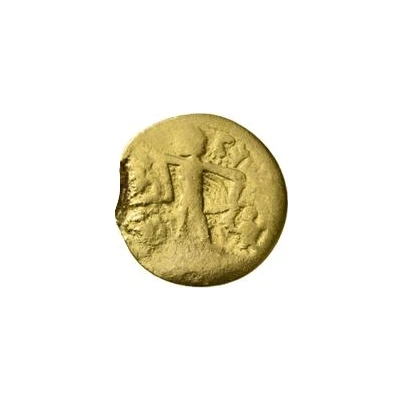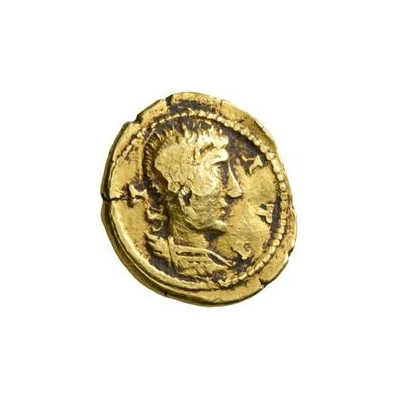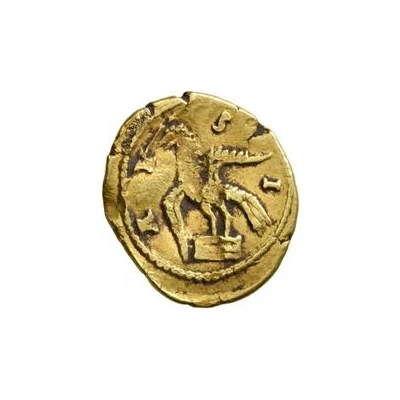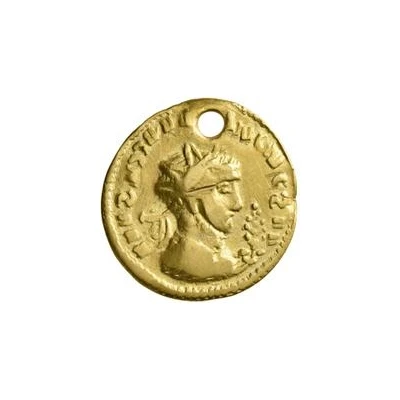
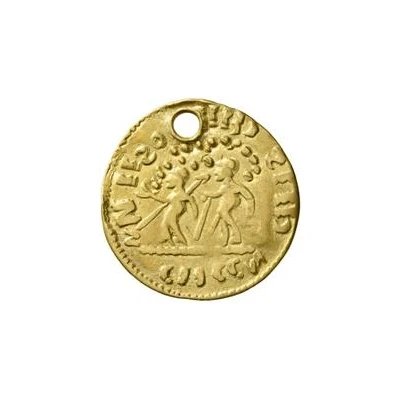

© Leu Numismatik
1 Quinarius - Imitating Diocletian, 284-305, and Maximian,
| Gold | 3.63 g | 20 mm |
| Issuer | Uncertain Germanic tribes |
|---|---|
| Type | Non-circulating coin |
| Years | 285-325 |
| Value | 1 Quinarius = ½ Aureus |
| Currency | Aureus (circa 150-325) |
| Composition | Gold |
| Weight | 3.63 g |
| Diameter | 20 mm |
| Shape | Round (irregular) |
| Technique | Hammered |
| Demonetized | Yes |
| Updated | 2024-10-04 |
| Numista | N#188890 |
|---|---|
| Rarity index | 100% |
Reverse
Two emporers standing left with the left holding thunderbolt in his right hand with transverse spear behind him, and with the right leaning right on club, all with numerous pellets and surrounded by legend.
Script: Latin
Lettering:
NNII SO[...]IIISCINC
CIICCN
Edge
Plain
Comment
The figures on the reverse are likely the emporers in guise of the gods from the prototypes, Jupiter and Hercules.The exact lettering of the surrounding legend may vary.
The vast majority of Aureus and Quinarius pieces from the Uncertain Germanic tribes are either holed or have a suspension loop attached. This implies that, while these were coins, these imitations were mainly meant for jewelry rather than to be spent.
Interesting fact
One interesting fact about this coin is that it was created by the Uncertain Germanic tribes, which is a mysterious and rare issuance. The coin's design imitates the Roman Emperor Diocletian and Maximian, indicating the influence of Roman culture on the Germanic tribes. Additionally, the fact that it is made of gold and weighs 3.63g suggests that it was a valuable and significant coin during its time.
